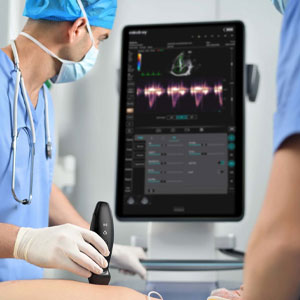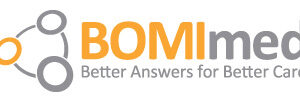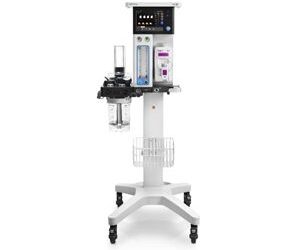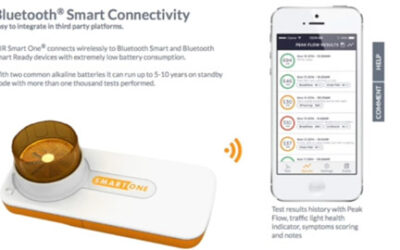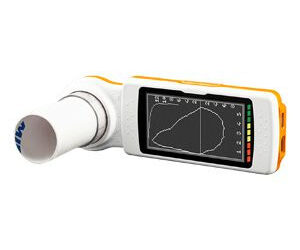Portable ultrasound machines have revolutionized medical practice, providing numerous benefits that enhance patient care and streamline medical processes. These compact and versatile devices offer advantages such as improved accessibility, real-time imaging, cost-effectiveness, and enhanced patient engagement. Below, we delve into the key benefits of portable ultrasound machines for medical practices, supported by recent research and expert opinions.
Enhanced Accessibility and Convenience
Portable ultrasound machines significantly enhance accessibility, especially in underserved or remote areas where access to traditional imaging facilities is limited. These devices empower healthcare providers in primary care settings, rural clinics, and humanitarian missions to perform ultrasound examinations quickly and accurately. This leads to earlier diagnoses, improved patient outcomes, and reduced healthcare disparities.
The mobility of these machines allows healthcare providers to bring diagnostic imaging directly to the patient’s bedside, eliminating the need for patients to travel to centralized imaging facilities. This is particularly beneficial for critically ill, injured, or mobility-impaired patients, reducing logistical challenges and potential discomfort associated with transportation.
Real-Time Imaging and Immediate Diagnosis
One of the most significant advantages of portable ultrasound machines is their ability to provide real-time imaging. This capability is crucial in emergency settings, where immediate diagnosis is often necessary. Portable ultrasounds enable healthcare professionals to visualize internal structures instantaneously, allowing for rapid and informed decision-making. For example, in emergency departments, portable ultrasounds can quickly assess internal bleeding, guide interventions, and facilitate timely triage decisions.
Cost-Effectiveness
Portable ultrasound machines offer a cost-effective solution for medical facilities compared to traditional ultrasound systems. These devices are typically more affordable, reducing the financial burden on healthcare institutions, especially those with limited budgets. The lower cost allows healthcare providers to equip more rooms with ultrasound machines, improving patient throughput and reducing wait times. Additionally, portable ultrasounds minimize the need for multiple dedicated ultrasound rooms, saving space and resources.
Patient Engagement and Satisfaction
Portable ultrasound machines enhance patient engagement by allowing patients to view real-time images of their internal structures. This visual aid helps patients better understand their medical conditions, fostering greater communication and cooperation with healthcare providers. Patients are more likely to follow treatment recommendations when they are more in tune with their diagnoses. This increased engagement leads to improved patient outcomes and satisfaction.
Applications in Various Medical Settings
Portable ultrasound machines are versatile tools that can be used in various medical settings, including:
- Emergency Medicine: Portable ultrasounds provide immediate imaging for trauma, cardiac, and abdominal emergencies. They aid in the rapid assessment of injuries and guide medical interventions.
- Remote and Rural Healthcare: These machines are essential for providing healthcare services in remote areas with limited access to advanced medical facilities. They can be used by traveling medical teams and community health workers to perform essential diagnostic assessments.
- Point-of-Care Diagnostics: Portable ultrasounds are invaluable for bedside diagnostics, allowing healthcare professionals to assess conditions such as abdominal pain, trauma injuries, or suspected deep vein thrombosis without moving the patient.
- Telemedicine: Portable ultrasound machines facilitate remote consultations by allowing physicians to visualize and interpret ultrasound scans in real-time, eliminating geographical barriers and extending healthcare services to remote locations.
Technological Advancements
Recent advancements in portable ultrasound technology have enhanced the capabilities and usability of these devices. Modern portable ultrasound machines feature advanced imaging modes, such as color Doppler, spectral Doppler, and 3D/4D imaging, enabling comprehensive assessments of vascular flow, cardiac function, and fetal anatomy. Additionally, intuitive user interfaces, touchscreen displays, wireless connectivity, and cloud-based image storage capabilities make portable ultrasounds user-friendly and interoperable with existing healthcare IT systems.
Training and Education
The effective use of portable ultrasound machines requires adequate training and proficiency among healthcare providers. Medical schools, residency programs, and continuing medical education courses increasingly incorporate ultrasound training into their curricula. This training equips healthcare professionals with the necessary skills to perform and interpret ultrasound examinations accurately, ensuring high-quality patient care.
Supporting Continuity of Care
Portable ultrasound machines play a critical role in supporting continuity of care by enabling healthcare providers to monitor patients’ progress and response to treatment in real time. Regular bedside ultrasound assessments allow for dynamic evaluation of evolving clinical conditions, facilitating timely adjustments to therapeutic interventions. This proactive approach enhances clinical decision-making and reduces the likelihood of adverse events or complications.
For instance, in chronic disease management, portable ultrasound machines can be used to monitor conditions such as heart failure, liver disease, and kidney function. By providing immediate feedback on the patient’s condition, healthcare providers can make necessary adjustments to the treatment plan on the spot, ensuring optimal patient care.
Enhancing Interdisciplinary Collaboration
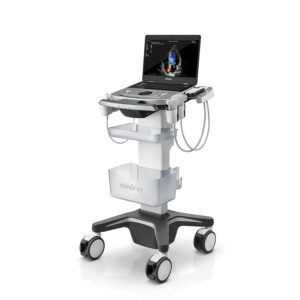 The use of portable ultrasound machines promotes interdisciplinary collaboration and communication among healthcare providers. With the ability to perform ultrasound examinations directly at the point of care, clinicians from different specialties can quickly share and discuss imaging findings, collaborate on treatment plans, and coordinate patient care more effectively. This interdisciplinary approach fosters a team-based approach to healthcare delivery, leading to more comprehensive and coordinated patient management.
The use of portable ultrasound machines promotes interdisciplinary collaboration and communication among healthcare providers. With the ability to perform ultrasound examinations directly at the point of care, clinicians from different specialties can quickly share and discuss imaging findings, collaborate on treatment plans, and coordinate patient care more effectively. This interdisciplinary approach fosters a team-based approach to healthcare delivery, leading to more comprehensive and coordinated patient management.
For example, in a hospital setting, a cardiologist, radiologist, and primary care physician can simultaneously review ultrasound images and collaborate on the best course of action for a patient with complex cardiovascular issues. This immediate access to imaging data enhances the quality of care and ensures all team members are on the same page regarding the patient’s treatment.
Facilitating Training and Education
Portable ultrasound machines are valuable tools for training and education in medical schools, residency programs, and continuing medical education courses. They provide hands-on learning experiences and skill acquisition for medical students and healthcare professionals, enabling them to develop proficiency in point-of-care ultrasound applications.
Medical trainees can practice ultrasound techniques on real patients or simulation models, gaining experience in interpreting images and making clinical decisions based on their findings. This practical training is essential for preparing future healthcare providers to use ultrasound technology effectively in their practice.
Reducing Hospital Readmissions
The ability of portable ultrasound machines to provide immediate and accurate diagnostic information can help reduce hospital readmissions. By enabling timely and appropriate interventions, these devices can prevent complications and manage conditions more effectively, reducing the need for patients to be readmitted for further treatment.
For example, in heart failure management, regular use of portable ultrasound machines can help detect fluid buildup in the lungs or other signs of worsening heart failure before they become critical. Early intervention can prevent the need for hospitalization and improve patient outcomes.
Supporting Telemedicine and Remote Consultations
In the era of telemedicine, portable ultrasound machines have become indispensable for remote consultations. With high-quality imaging capabilities, these devices allow physicians to remotely visualize and interpret ultrasound scans in real-time. This eliminates geographical barriers and extends healthcare services to remote locations, providing virtual patient care and expert consultations.
For instance, a rural clinic without access to a specialist can perform an ultrasound scan and send the images to a specialist in a different location for immediate interpretation. This capability ensures that patients receive timely and accurate diagnoses, even in areas with limited access to healthcare providers.
Supporting Preventive Care
Portable ultrasound machines are not only instrumental in diagnosing existing conditions but also play a significant role in preventive care. By providing immediate and accurate imaging, these devices enable healthcare providers to identify potential health issues before they become serious. Regular screenings using portable ultrasounds can help detect early signs of diseases such as abdominal aortic aneurysms, liver diseases, and thyroid abnormalities, allowing for timely intervention and management.
For example, in primary care settings, routine use of portable ultrasound machines can help detect early signs of cardiovascular diseases by visualizing the heart and blood vessels. Detecting conditions like arterial plaque buildup early can lead to lifestyle changes and medical interventions that prevent heart attacks and strokes. This proactive approach to healthcare significantly improves patient outcomes and reduces long-term healthcare costs.
Enhancing Workflow Efficiency
Portable ultrasound machines enhance workflow efficiency in medical practices by streamlining diagnostic processes and reducing the time needed for patient evaluations. Traditional ultrasound machines often require scheduling, room availability, and patient transport, which can cause delays. In contrast, portable ultrasound devices can be used at the point of care, eliminating these logistical challenges and expediting the diagnostic process.
The flexibility and ease of use of portable ultrasounds allow healthcare providers to perform multiple examinations in different locations quickly. This improved efficiency is particularly beneficial in busy medical environments such as emergency departments, where timely diagnosis is critical. By reducing the waiting time for diagnostic imaging, portable ultrasound machines help improve patient throughput and overall clinic productivity (FindaTopDoc).
Furthermore, the integration of portable ultrasound machines with electronic medical records (EMR) systems allows for seamless data transfer and storage. This integration facilitates better record-keeping and ensures that imaging results are readily accessible to all members of the healthcare team, further enhancing collaborative care and decision-making.
Versatility Across Medical Specialties
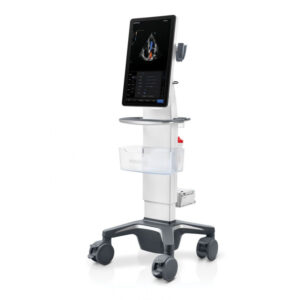 The versatility of portable ultrasound machines makes them valuable tools across a wide range of medical specialties. Their ability to provide high-quality imaging in various clinical settings makes them indispensable in fields such as cardiology, obstetrics and gynecology, orthopedics, and emergency medicine.
The versatility of portable ultrasound machines makes them valuable tools across a wide range of medical specialties. Their ability to provide high-quality imaging in various clinical settings makes them indispensable in fields such as cardiology, obstetrics and gynecology, orthopedics, and emergency medicine.
In cardiology, portable ultrasound machines are used to perform echocardiograms, which assess heart function and detect abnormalities such as valve disorders, cardiomyopathies, and pericardial effusions. These devices allow cardiologists to conduct comprehensive cardiac evaluations at the patient’s bedside, facilitating prompt diagnosis and treatment planning.
In obstetrics and gynecology, portable ultrasounds are crucial for monitoring fetal development, assessing placental position, and diagnosing conditions such as ectopic pregnancies. Their portability enables obstetricians to provide prenatal care in various settings, including remote clinics and home visits, ensuring that expectant mothers receive consistent and high-quality care throughout their pregnancy.
Orthopedic specialists use portable ultrasound machines to diagnose musculoskeletal conditions such as ligament tears, muscle injuries, and joint effusions. These devices provide real-time imaging, aiding in the assessment of soft tissue structures and guiding interventions such as injections and aspirations.
In emergency medicine, the rapid assessment capabilities of portable ultrasound machines are invaluable for evaluating trauma patients, guiding procedures such as central line placements, and diagnosing acute conditions like pneumothorax and pericardial tamponade. The immediate availability of diagnostic imaging in emergency settings significantly improves patient outcomes and supports critical decision-making.
Transformative Impact of Portable Ultrasound Machines in Modern Medical Practice
Portable ultrasound machines represent a transformative innovation in medical imaging, offering mobility, versatility, and accessibility without compromising imaging quality or diagnostic accuracy. By bringing ultrasound imaging directly to the point of care, these devices empower healthcare providers to make timely and informed clinical decisions, leading to improved patient outcomes and enhanced healthcare delivery. As technology continues to evolve, the role of portable ultrasound machines in modern medical practice will undoubtedly expand, further revolutionizing the way we diagnose and manage a wide range of medical conditions.









